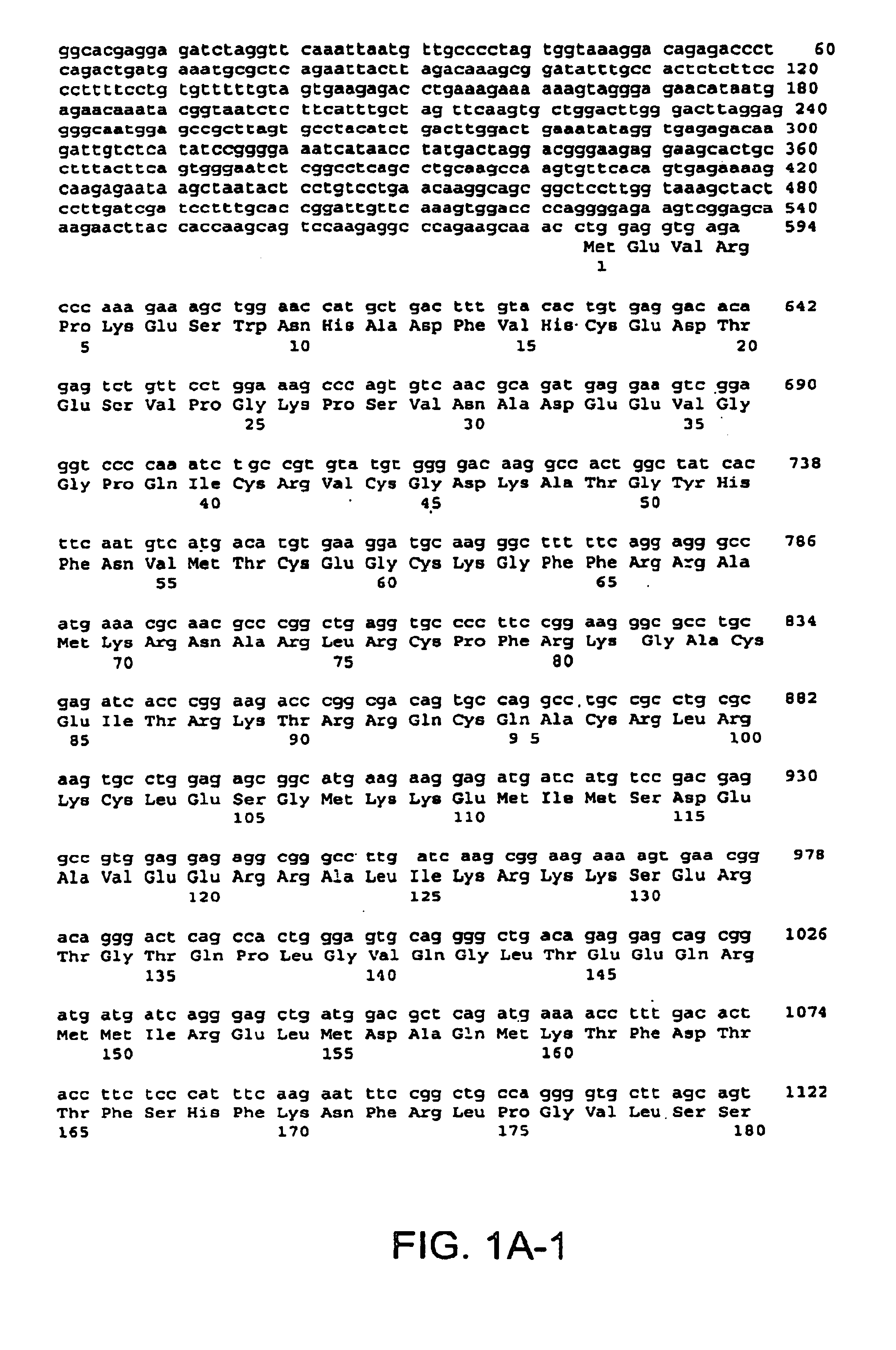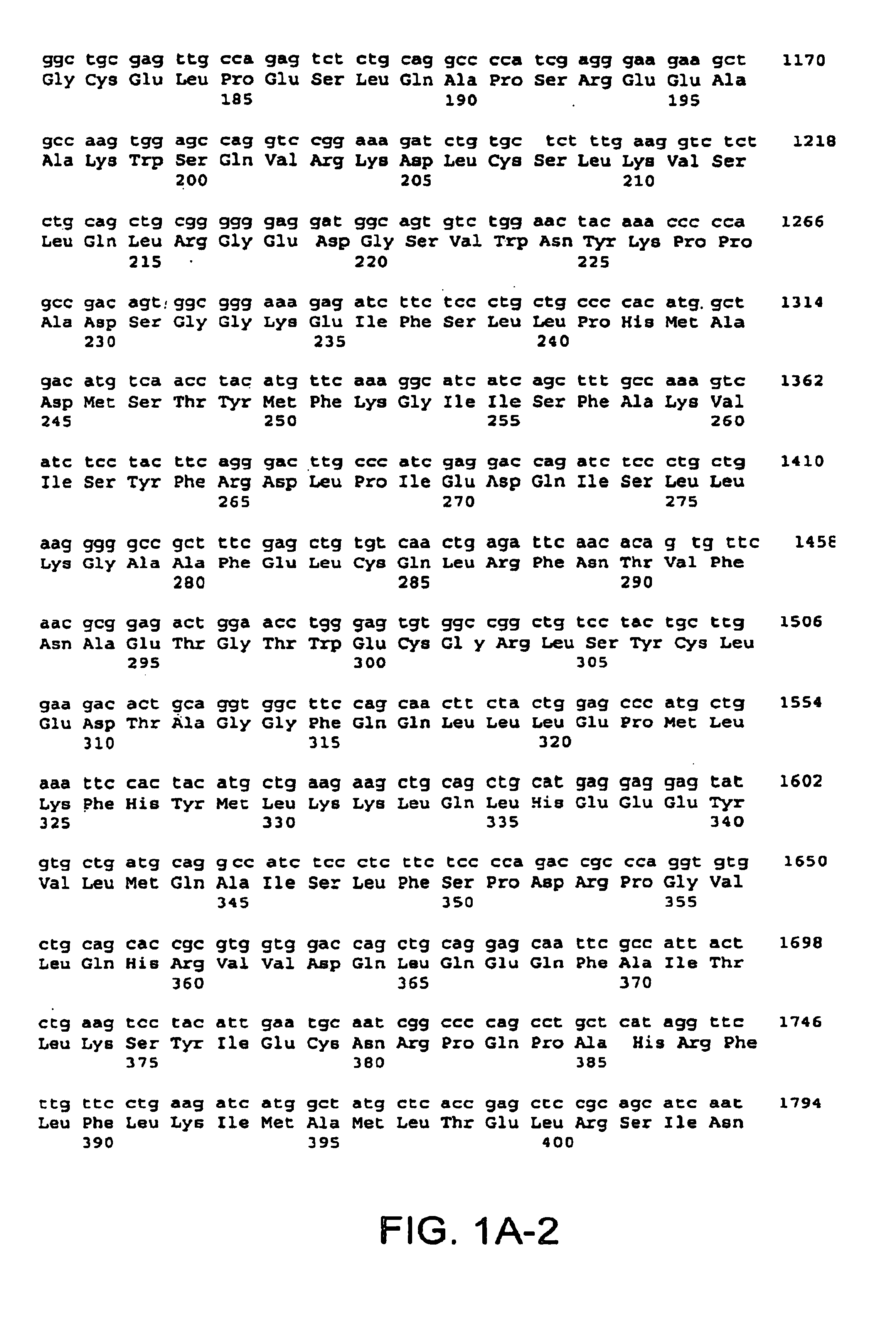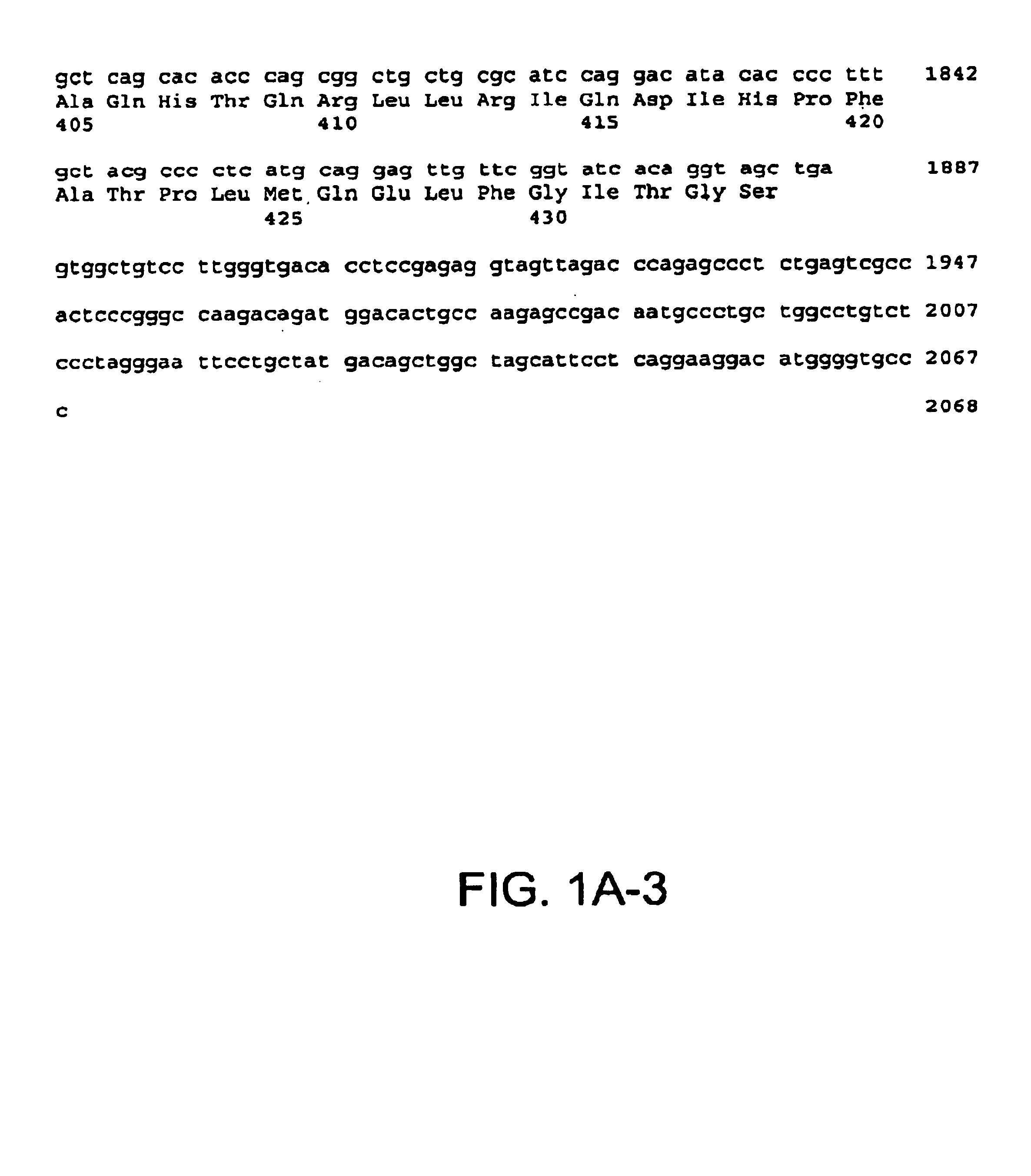Transgenic mice expressing a human SXR receptor polypeptide
a human sxr receptor and polypeptide technology, applied in the field of transgenic mice expressing human sxr receptor polypeptides, can solve the problems of rapid depletion of endogenous and administered steroids, toxic amount of steroid, and potential danger of steroid accumulation
- Summary
- Abstract
- Description
- Claims
- Application Information
AI Technical Summary
Benefits of technology
Problems solved by technology
Method used
Image
Examples
example 1
cDNA Identification
[0189]SXR was identified from a human genomic library (Clontech) hybridized with a full-length cDNA encoding Xenopus BXR (Blumberg et al., 1998a) under reduced stringency conditions (hybridization in 0.5 M NaPO4 pH 7.0, 7% sodium dodecyl sulfate (SDS), 5% dextran sulfate at 65° C. overnight, washing three times twenty minutes in 2 x standard saline citrate solution (0.15M saline containing 0.015M sodium citrate, pH 7)(SSC), 0.1% SDS at 37° C.). Restriction mapping and Southern blot analysis showed that three exons were contained within the 9 kb EcoRI hybridizing fragment. This fragment was used to probe a Northern blot of multiple types of human tissue (Clontech) at high stringency (hybridization as above, washing twice for 20 minutes in 0.1x SSC, 0.1% SDS at 50° C.) and hybridization was detected in liver. A human liver cDNA library (Stratagene, La Jolla, Ca) was subsequently screened using the same conditions, and four independent clones were identified. Each of...
example 2
Ability of SXR to Heterodimerize with RXR
[0190]The protein coding region of SXR was PCR amplified and subcloned into NcoI and BamHI sites of the vector pCDG1 (Blumberg, supra, 1998α) using ExoIII-mediated ligation independent cloning (Li and Evans, Nucl. Acids Res. 25, 4165-4166, 1997 ). During this process the putative initiator Leu was converted to Met with a Kozak consensus sequence CCATGG. The actual response elements and the number of copies are as follows: the base vector is tk—luc in all cases (Hollenberg et al., Nature 318:635-641, 1985):[0191]DR-1, tk(ApoAI)4 (Ladies and Karathanasis, Science 251:561-565, 1991);[0192]DR-2, tk(Hox-B1-RARE)2 (Ogura and Evans, Proc. Natl. Acad. Sci. (USA) 92:387-391, 1995);[0193]βDR-3, tk(CYP3A2)3 (Kliewer et al., Cell 92:73-82, 1998),[0194]DR-4, tk(MLV-TRE)2 (Umesono et al., Cell 65:1255-1266, 1991);[0195]βDR-4, tk(LXRE)3 (Willey et al., Genes Dev.9:1033-1045, 1995);[0196]βDR-5, tk(βRARE)3 (Sucov et al., Natl. Acad. Sci. (U.S.A.) 87:5392-5396...
example 3
Cell Culture and Transfection Studies
[0211]To determine whether the activity of SXR was ligand-dependent, mixtures of natural and synthetic compounds were tested for their ability to activate SXR in transfection-based assays. Thus, the protein coding region of SXR was PCR amplified and subcloned into Ncol and BamH1 sites of the vector pCDG1 (see Blumberg et al., supra). During this process the putative initiator Leu was converted to Met with a Kozak consensus sequence CCATGG.
[0212]GAL4-SXR was constructed by cloning amino acid residues 134-446 of SXR into pCMX-GAL4 (see Perlman et al. supra). CV-1 cells were maintained in DMEM containing 10% resin-charcoal stripped calf bovine serum. Liposome-mediated transient transfections were performed using DOTAP reagent (Boehringer Manheim) at a concentration of 5 mg / ml in DMEM containing 10% resin charcoal stripped fetal bovine serum in 96-well format using a Beckman Biomek 1000 laboratory workstation as previously described by Blumberg et al...
PUM
| Property | Measurement | Unit |
|---|---|---|
| pH | aaaaa | aaaaa |
| pH | aaaaa | aaaaa |
| concentration | aaaaa | aaaaa |
Abstract
Description
Claims
Application Information
 Login to View More
Login to View More - R&D
- Intellectual Property
- Life Sciences
- Materials
- Tech Scout
- Unparalleled Data Quality
- Higher Quality Content
- 60% Fewer Hallucinations
Browse by: Latest US Patents, China's latest patents, Technical Efficacy Thesaurus, Application Domain, Technology Topic, Popular Technical Reports.
© 2025 PatSnap. All rights reserved.Legal|Privacy policy|Modern Slavery Act Transparency Statement|Sitemap|About US| Contact US: help@patsnap.com



